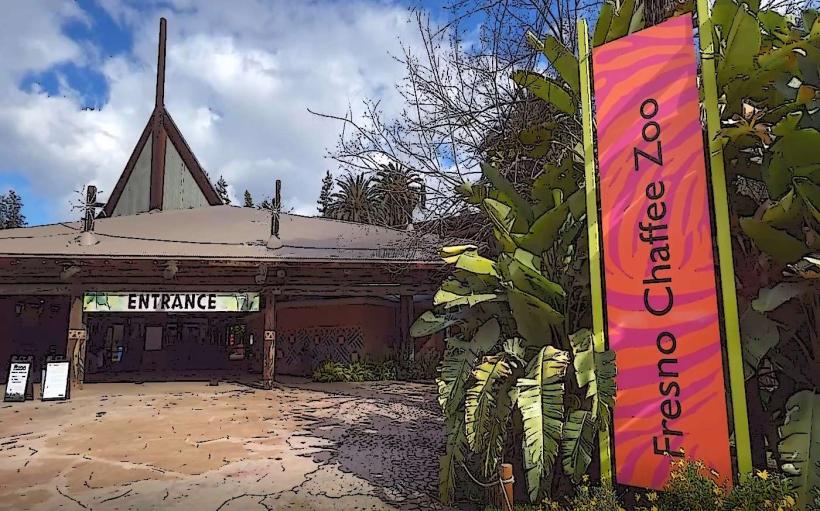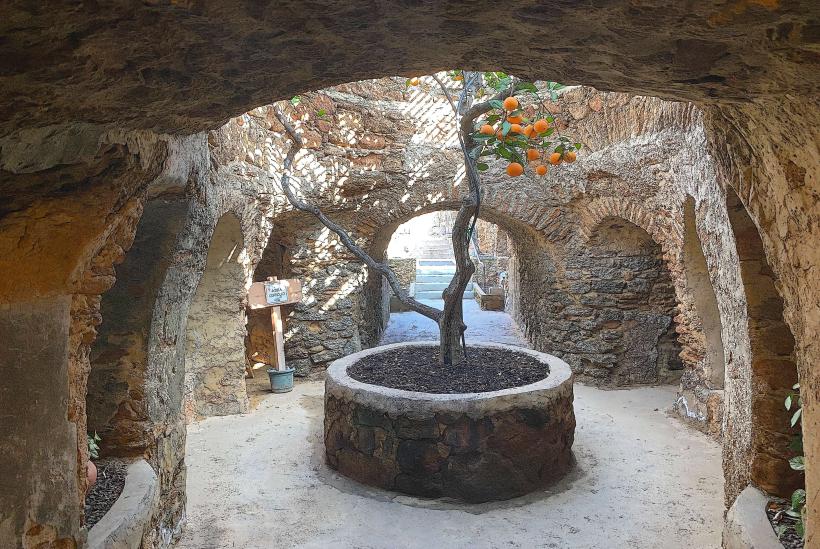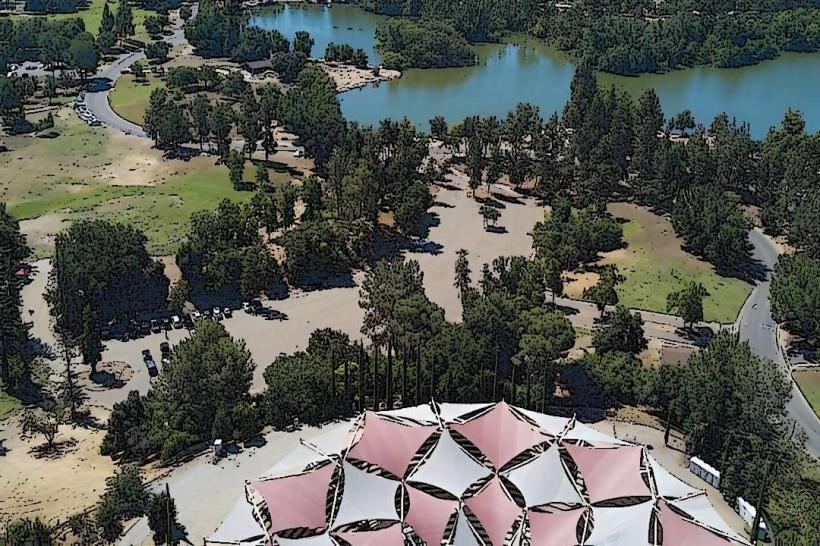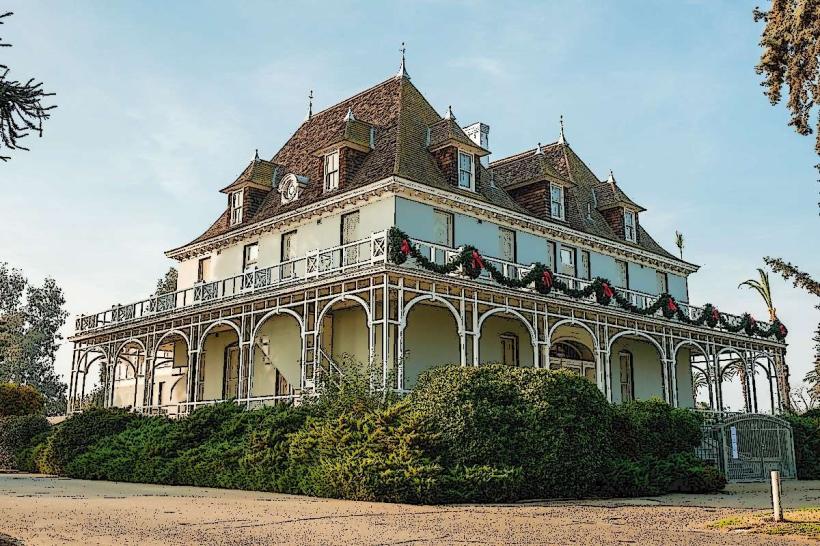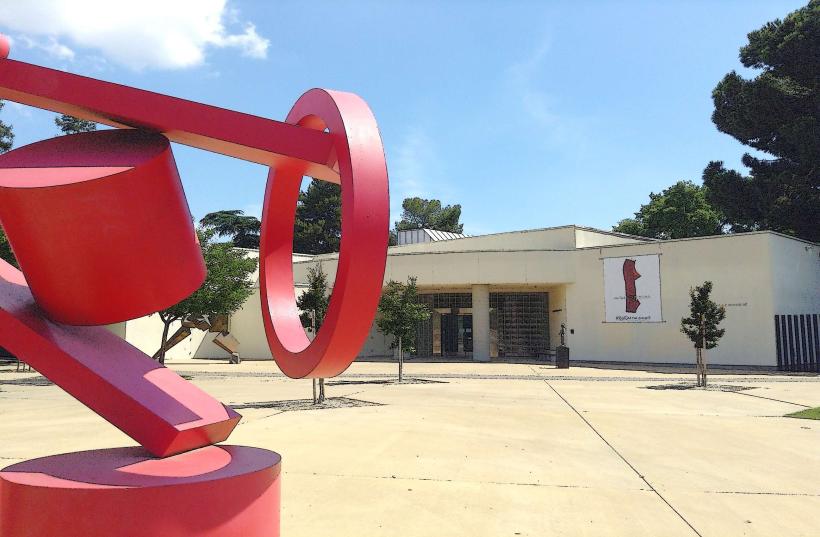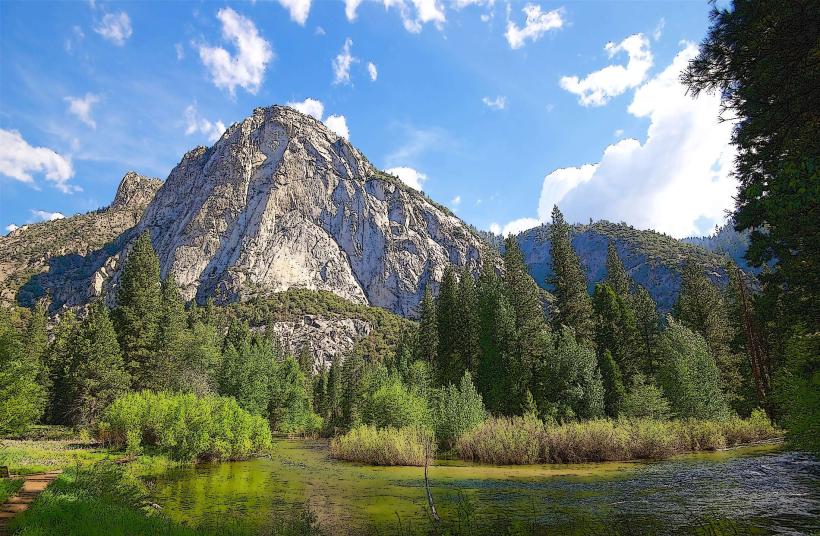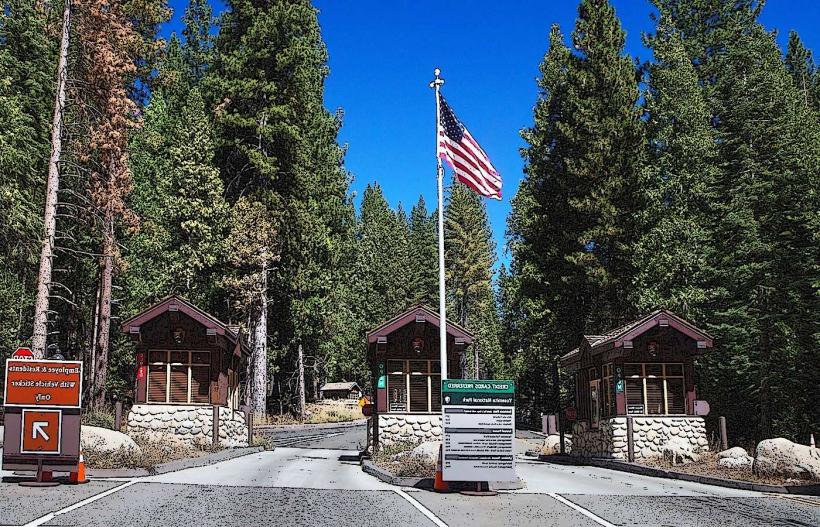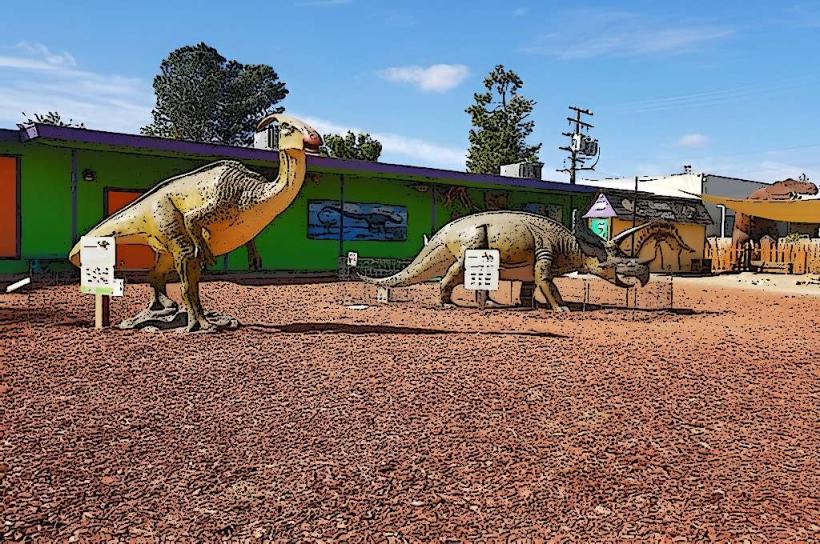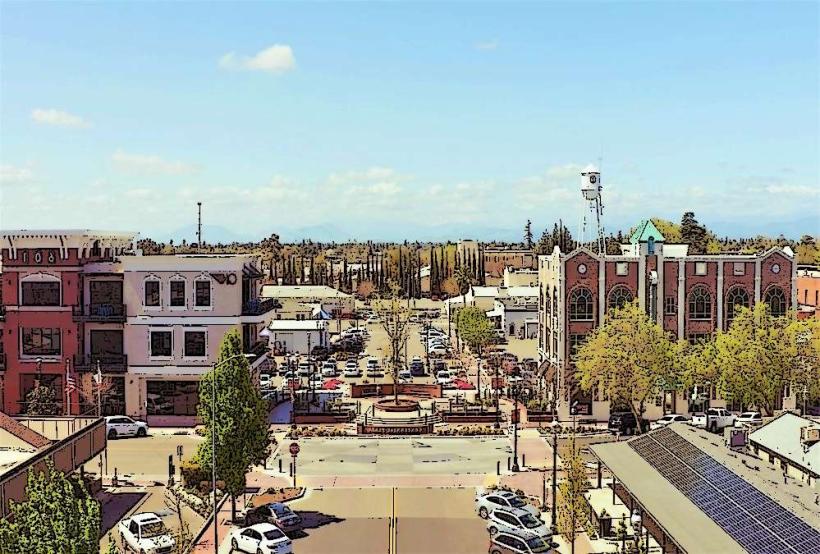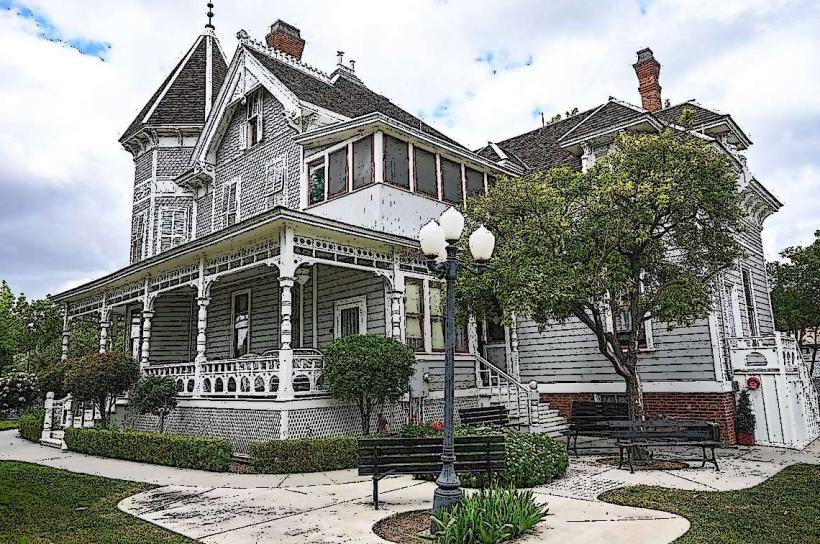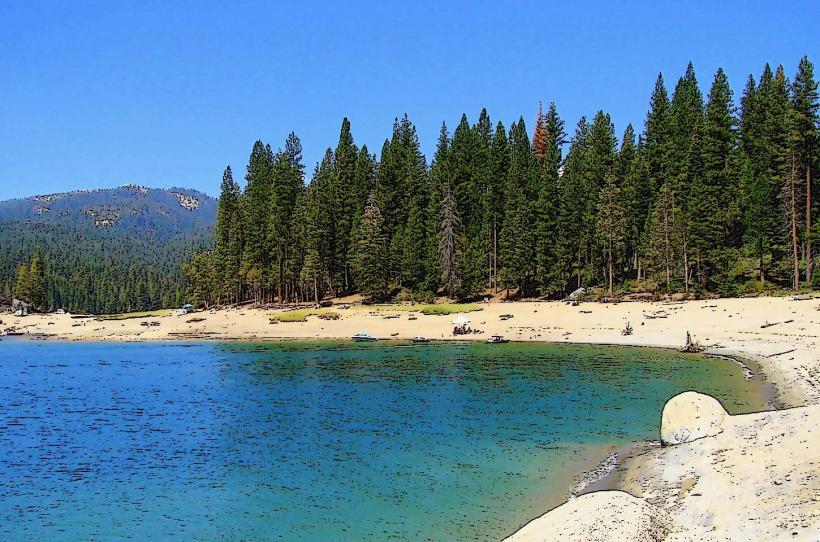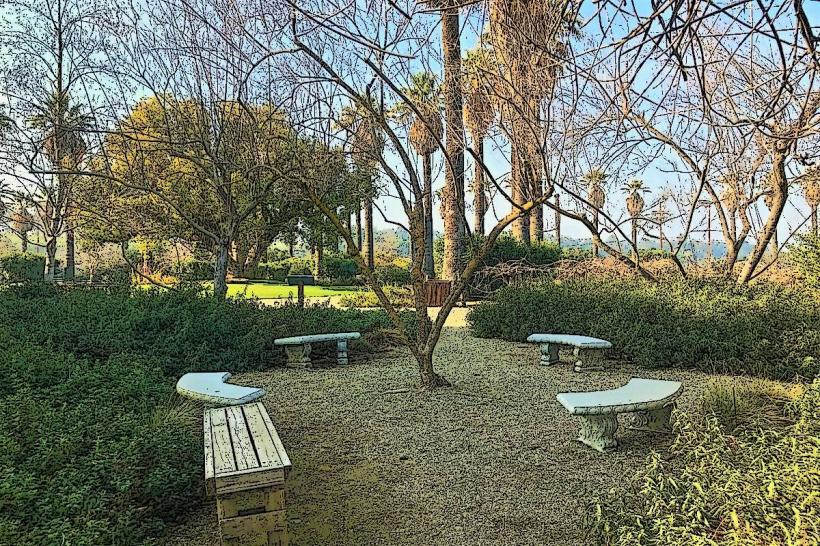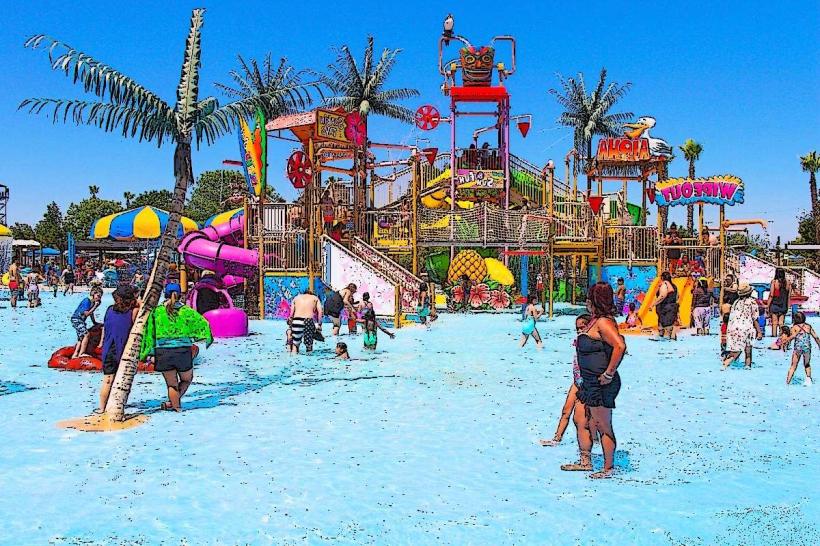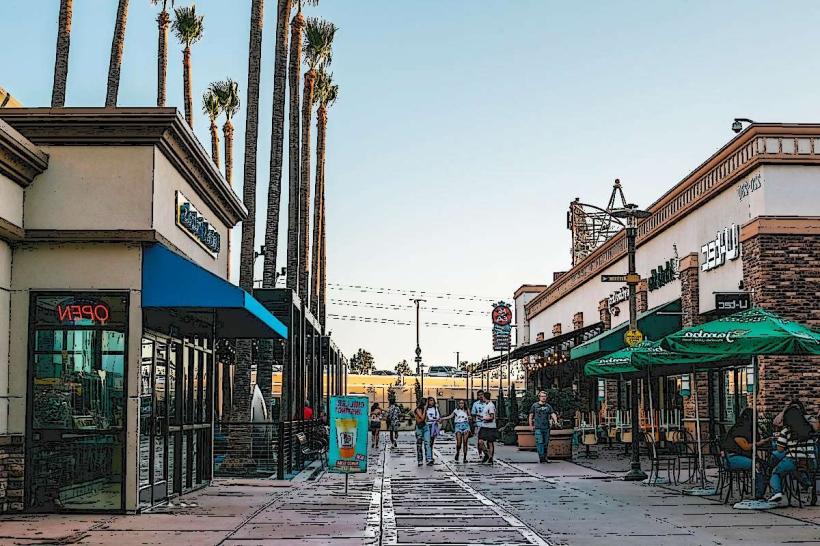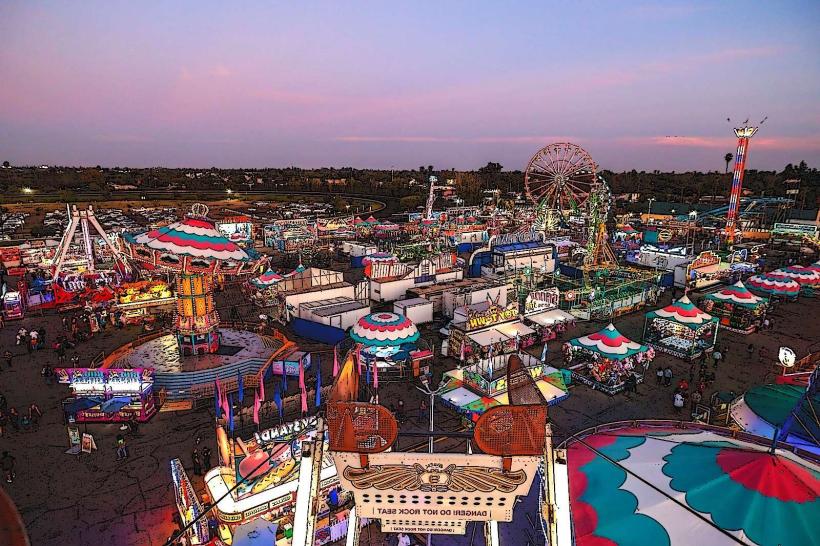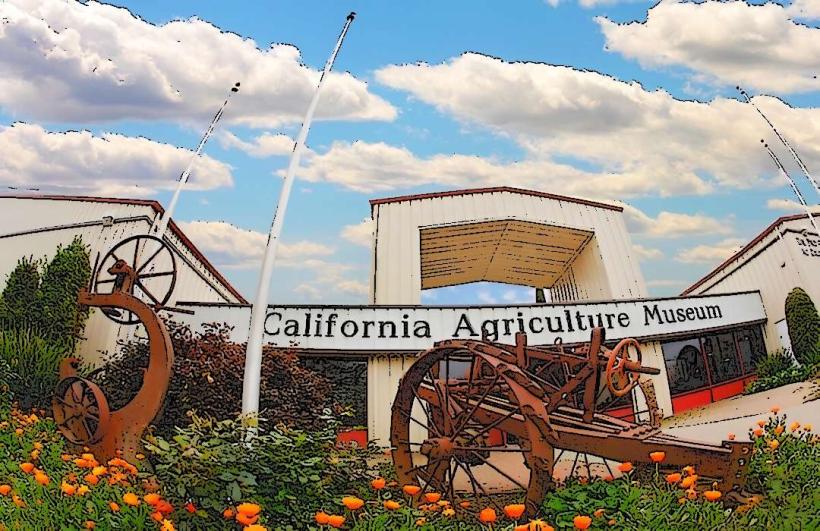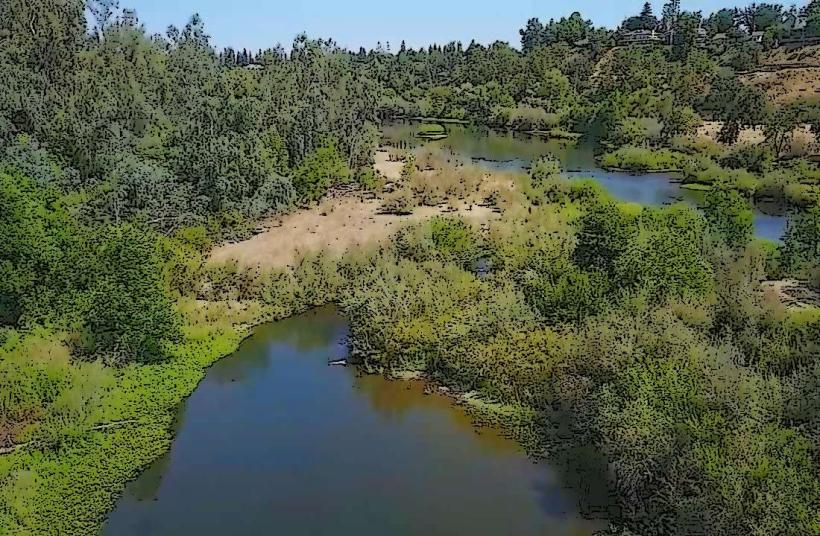Information
Landmark: Tower TheatreCity: Fresno
Country: USA California
Continent: North America
Tower Theatre, Fresno, USA California, North America
The Tower Theatre in Fresno, California is one of the most iconic cultural and architectural landmarks in the city. It is located in the Tower District, a vibrant neighborhood known for its artistic atmosphere, nightlife, and historic character. Here's a fully detailed look into the theater's history, architecture, cultural role, and modern significance:
1. Architectural Overview
Architect: S. Charles Lee, one of the most prolific and respected designers of movie palaces in California.
Construction Year: 1939
Style: Streamline Moderne, a late branch of Art Deco that emphasized aerodynamic lines and futuristic design elements.
Distinctive Features:
The 80-foot tower rising above the marquee, which gives the theater its name. It was inspired by the 1939 New York World’s Fair "Star Pylon."
Neon lighting integrated into the vertical tower for nighttime visibility and dramatic flair.
Use of glass blocks, curved corners, and horizontal lines to give the illusion of speed and motion, typical of the Streamline Moderne style.
Interior murals by noted artist Anthony Heinsbergen, depicting theatrical and musical motifs. Heinsbergen also worked on LA’s Wiltern Theatre and other notable venues.
2. Historical Context and Opening
The Tower Theatre was commissioned by A. Emory Wishon, a businessman with roots in hydroelectric energy.
It opened to the public on December 15, 1939, with the films Dancing Co-Ed and Henry Goes Arizona.
It was a state-of-the-art movie palace at the time of its opening:
First building in Fresno with full refrigerated air conditioning.
Among the earliest in California to fully embrace Moderne architecture.
Included a large main auditorium, balcony seating, and stage space for occasional live performances.
3. Cultural and Civic Significance
Neighborhood Impact:
The Tower Theatre helped stimulate commercial growth in what became known as the Tower District, creating a decentralized alternative to downtown Fresno. Restaurants, shops, and nightlife soon sprang up around it.
Birthplace of Local Culture:
Over the decades, the theater became a center for independent cinema, live concerts, community events, and even spiritual gatherings. It symbolized a blend of urban elegance and local artistry in the city.
4. Decline and Restoration
By the 1980s, like many historic movie houses, the Tower Theatre experienced a decline due to suburban multiplexes and dwindling downtown traffic.
In 1989, it was forced to close its doors for traditional movie operations.
A major renovation project was initiated, led by local preservationists and civic organizations.
Goals of the restoration:
Preserve historic elements, especially the murals and tower.
Modernize lighting, seating, and safety features to meet code.
Convert the space into a multi-purpose performing arts venue.
In 1990, it reopened as the Tower Theatre for the Performing Arts.
Awards received:
1991: California Preservation Foundation Award for Outstanding Achievement in Restoration.
Honor from the San Joaquin Chapter of the American Institute of Architects.
5. Modern Use and Ownership
Since reopening, the Tower Theatre has hosted a wide range of events:
Live music concerts, including jazz, blues, rock, and world music.
Stand-up comedy, plays, and dance performances.
Film screenings, particularly of independent, foreign, and classic films.
Occasional lectures, spiritual services, and community town halls.
Public Ownership:
In 2022, after a highly publicized legal and civic dispute over private religious use of the venue, the City of Fresno purchased the Tower Theatre to ensure it remains a public arts and cultural space.
This move aimed to protect the theater’s identity as a historic civic landmark and maintain its availability for inclusive and secular community programming.
6. The Tower District Connection
The Tower District is now one of Fresno’s most visited neighborhoods, and the theater is its symbolic heart.
Hosts the annual Tower District Mardi Gras Parade, Fresno Film Festival, and ArtHop events.
The area features vintage shops, cafes, bookstores, and music venues, reflecting the theater’s artistic influence.
7. Preservation and Legacy
The Tower Theatre is on the National Register of Historic Places and protected under local landmark ordinances.
Its neon-lit tower and marquee are regularly maintained, and the building stands as a rare, well-preserved example of late-1930s West Coast theater architecture.
It is often featured in publications and documentaries on the evolution of the American movie palace.
In sum, the Tower Theatre in Fresno is more than just a historic building—it is a living monument to community resilience, the performing arts, and California’s architectural legacy.

